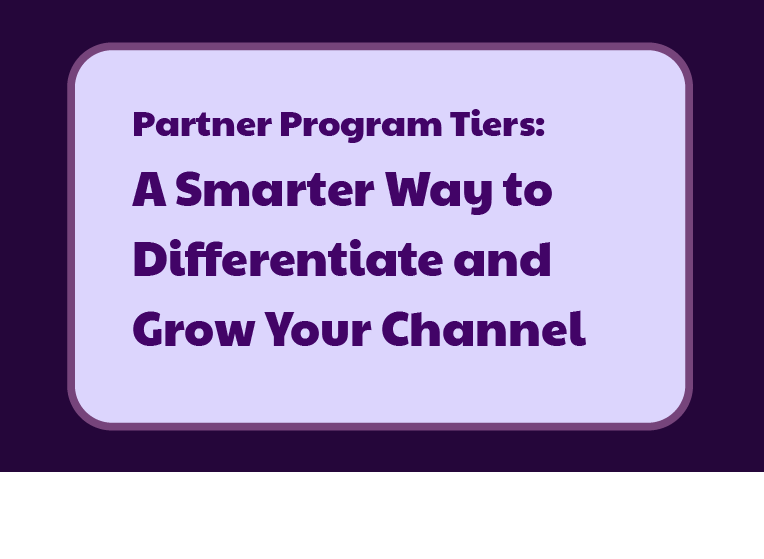Integrations & API Support In a PRM & Partner Portal: What Buyers Look For (Checklist)
Checklist: See what PRM buyers asked us about API support, integrations, workflows, and extensibility (based on real anonymized prospect questions)

Table of Contents 📋
Table of Contents 📋
If you’re buying a PRM for partner operations, one of the features you’re going to want to ensure it has is API support (see the checklist below for what to look for and how to assess a PRM’s API support).
Why API support is important in a PRM & partner portal
APIs are one method (out of multiple) for connecting different systems to work together, and if your partner program management tech stack runs on multiple external systems – such as a billing & subscription platform, a marketing automation platform, TCMA, LMS, incentive system, or other – strong API support in your PRM (being at the core of your partner management tech stack) is what can keep them all connected.
Through APIs, the PRM can act as the front-end hub, showing data from all connected systems in one place. APIs can make your PRM the central interface for your entire partnerships tech stack.
API support empowers you to tailor the PRM to your unique partner operations and PX workflows:
- Eliminates repetitive tasks by connecting external systems
- On partner experience: Offer an adaptive partner portal experience, and it further enables a seamless partner experience by providing partners with a single portal to log in to and see everything relevant to them without switching between applications.
- Keep your partner infrastructure flexible as your ecosystem, and partner management needs grow
Building custom workflows with a PRM: API support is a main ingredient for successful partner operations
APIs let your PRM communicate with other applications automatically instead of relying on manual exports or data entry. APIs are how workflows “reach out” and move data + actions across systems.
- Example: When a partner closes a subscription deal in your billing system, an integration can update the opportunity or customer record in the portal so the partner immediately sees current status and renewal information
- Example: When a partner launches a co-branded campaign through your marketing automation or TCMA platform, APIs can push campaign performance data (opens, clicks, leads generated) into the partner’s portal view so they don’t need to log into multiple tools.
Exactly how these workflows behave depends on how your integrations are designed (which systems you connect, what events you listen for, and what data you sync), but API support is what makes these scenarios possible.
API capability in a PRM enables personalized partner experiences
Here are a couple of examples from our data:
- Billing / subscription visibility for partners
[A customer] used Magentrix’s REST API to connect their external billing/subscription platform to the portal so account and subscription data could sync automatically.
Their goal was to use API connections to push subscription status, renewal dates, and key usage metrics into the portal in near real time – which allowed them to give each partner a tailored view of their customers, including upcoming renewals and expansion opportunities.
Partners see subscription information that updates dynamically, without any manual exports or spreadsheet uploads from admins. - Marketing automation platform and TCMA visibility
Another example involved prospects asking whether Magentrix’s REST API could connect with their marketing automation or TCMA platform so partners could see campaign performance in the portal.
This is another form of PX personalization – using API calls to tailor what a partner sees when they log in (campaign stats, lead volume, or engagement metrics) based on their accounts, territories, or partner type.
And it can future-proof your partner operations
Your tech stack will evolve – maybe you’ll adopt a new subscription & billing platform, marketing automation tool, or analytics tool next year.
- A PRM with open, well-documented APIs can integrate these systems easily, without rebuilding or waiting for new vendor connectors.
What is a REST API and is it the same as “API”?
Here’s the distinction in simple terms:
- API (Application Programming Interface) is the general concept – it’s any defined way for one system to talk to another.
- APIs can follow different styles or protocols (REST, SOAP, GraphQL, etc.).
- This is why you hear terms likke REST API as opposed to just API
- Think of “API” as the umbrella term.
- APIs can follow different styles or protocols (REST, SOAP, GraphQL, etc.).
- REST API is one specific type of API – it follows the REST (Representational State Transfer) principles.
- It uses HTTP methods like GET, POST, PUT, and DELETE to exchange data, usually in JSON format.
So a REST API is an API, but not all APIs are REST.
- It uses HTTP methods like GET, POST, PUT, and DELETE to exchange data, usually in JSON format.
To illustrate this further:
- “API” could mean any integration interface.
- “REST API” means that interface uses REST standards (URLs, HTTP verbs, JSON or XML data).
So if someone says, “our system has an API,” they might mean REST, SOAP, or something else. But if they say “we have a REST API,” that’s a specific modern kind most web apps use today.
Checklist: What you need to know when assessing if a PRM vendor has the API support they tell you they do
Based on our own data (which includes assessments by prospects that have vetted Magentrix) here's what buyers most commonly look for in regards to API support capabilities and validating our claims therein:
More on Magentrix’s API Support: What you need to know
Unlike the other PRMs, we offer the option for you to connect to other applications via their API.
This means you’re not limited to what comes out of the box in Magentrix.
You can build integrations to external apps or in-house applications so data flows more easily and is centralized in one place. This way, you can keep your existing systems, wire them into the Magentrix portal and reduce manual work.
And we have 98% API support for everything: Magentrix allows other applications to integrate into Magentrix. This means that almost everything you can do in Magentrix can also be done through our REST API.
In practice that means your other systems (CRM, ERP, in-house apps, etc.) can create, read, update, and sync nearly all key records in Magentrix.
So if your partners want to integrate their CRM to send you leads directly into your portal, there is nothing stopping them to do that.
––––––
Read more about our REST API here.
FAQs
Question 1
Answer 1
Question 2
Answer 2
Question 2
Answer 2
Question 2
Answer 2





